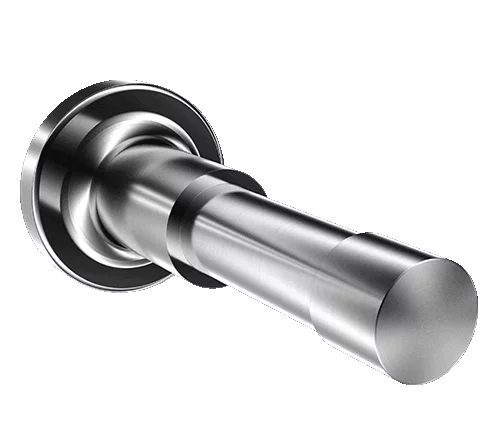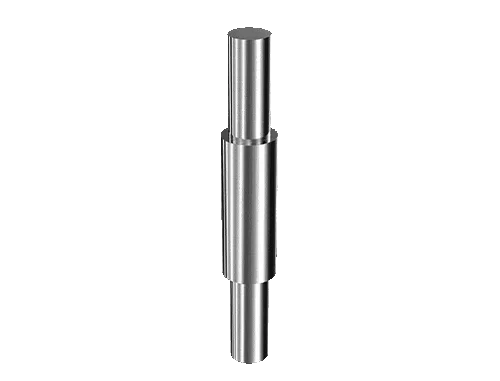Shandong Qilu lndustrial Co.,Ltd.
Exploring the Benefits of Forged Steel Shafts in Manufacturing
Introduction

In the realm of modern manufacturing, selecting the right materials for critical components such as shafts plays a pivotal role in ensuring optimal performance, reliability, and durability. Forged steel shafts have emerged as a preferred choice due to their exceptional mechanical properties and ability to withstand rigorous operational conditions. This blog delves deep into the manifold benefits and applications of forged steel shafts across various industries.
Benefits of Forged Steel Shafts
Strength and Durability
Forged steel shafts are renowned for their superior strength and durability compared to shafts made from other materials such as cast iron or aluminum. The forging process involves heating a steel billet to a high temperature and then shaping it using compressive force. This process refines the grain structure of the steel, resulting in improved mechanical properties such as higher tensile strength and toughness. These characteristics make steel forged shafts highly resistant to fatigue failure and impact loading, which is critical in applications subject to high stress and demanding environments.
Enhanced Performance in Harsh Environments
The robust nature of steel forged shafts enables them to perform reliably in harsh operating conditions. Whether it’s extreme temperatures, corrosive atmospheres, or high-pressure environments, these shafts maintain their integrity and functionality over extended periods. This resilience makes them indispensable in industries such as aerospace, oil and gas, and marine engineering, where components are exposed to challenging external factors.
Customizability and Design Flexibility
Manufacturers can tailor the properties of forged steel shafts to meet specific application requirements. Through variations in forging techniques and alloy compositions, shafts can be optimized for factors such as load-bearing capacity, torsional strength, dimensional precision, and resistance to wear and abrasion. This flexibility in design ensures that steel forged shafts can be adapted for a wide range of industrial applications, from heavy-duty machinery to precision instruments.
Cost-Effectiveness Over the Lifecycle
While the initial cost of forged steel shafts may be higher compared to alternatives like cast iron, their long-term cost-effectiveness is undeniable. The inherent strength and durability of steel forged shafts translate into reduced maintenance costs, less downtime, and extended operational lifespan. This makes them a sound investment for industries looking to optimize efficiency and minimize overall lifecycle expenses.
Applications of Forged Steel Shafts
Forged steel shafts find extensive use across diverse industries due to their robustness and reliability:
Aerospace Industry
In aerospace applications, forged steel shafts play a critical role in components such as landing gear assemblies, engine mounts, and transmission systems. Their ability to withstand high stress, fatigue, and extreme temperatures ensures the safety and operational reliability of aircraft, making them indispensable in aviation technology.
Automotive Industry
Automotive manufacturers utilize forged steel shafts in essential drivetrain components such as drive shafts, axle shafts, and steering mechanisms. These shafts provide the necessary strength and durability to transmit power efficiently and reliably under various driving conditions, contributing to the overall performance and safety of vehicles.
Oil and Gas Sector
In the oil and gas industry, forged steel shafts are utilized in drilling equipment, pumps, and valves where they must endure extreme pressure, corrosive environments, and high operational loads. Their resilience to harsh conditions ensures continuous operation and minimizes downtime in critical exploration and production processes.
Case Studies: Real-World Applications

Aerospace Industry
For example, in the aerospace sector, forged steel shafts are integral to landing gear systems, where they must support the weight of an aircraft during takeoff, landing, and taxiing. The high-strength properties of forged steel ensure that these shafts can withstand the dynamic forces and stresses encountered during flight operations, thereby ensuring the safety and reliability of air travel.
Automotive Industry
Similarly, in the automotive industry, forged steel shafts are employed in components like crankshafts and camshafts, where they must endure continuous rotational motion and varying loads. The superior mechanical properties of forged steel contribute to reduced wear and increased longevity, thereby enhancing the performance and longevity of automotive engines and drivetrains.
Conclusion
In conclusion, forged steel shafts represent a pinnacle in material engineering for manufacturing applications where strength, durability, and reliability are paramount. Their ability to withstand extreme conditions while maintaining performance over extended periods makes them indispensable across industries ranging from aerospace to automotive and beyond. By choosing forged steel shafts, manufacturers can ensure enhanced operational efficiency, reduced downtime, and significant long-term cost savings.
FAQ
Q: What is the forging process for steel shafts?
A: Forged steel shafts are produced through a process that involves heating steel billets to a forging temperature, shaping them into the desired form using compressive force, and then finishing them to precise tolerances.
Q: How do forged steel shafts compare to cast iron shafts in terms of performance?
A: Forged steel shafts offer superior strength, toughness, and fatigue resistance compared to cast iron shafts, making them suitable for high-stress applications where reliability is critical.
Q: Are forged steel shafts more expensive than other types of shafts?
A: Initially, forged steel shafts may have a higher upfront cost than alternatives like cast iron. However, their extended lifespan and reduced maintenance requirements often result in lower overall costs over time.
